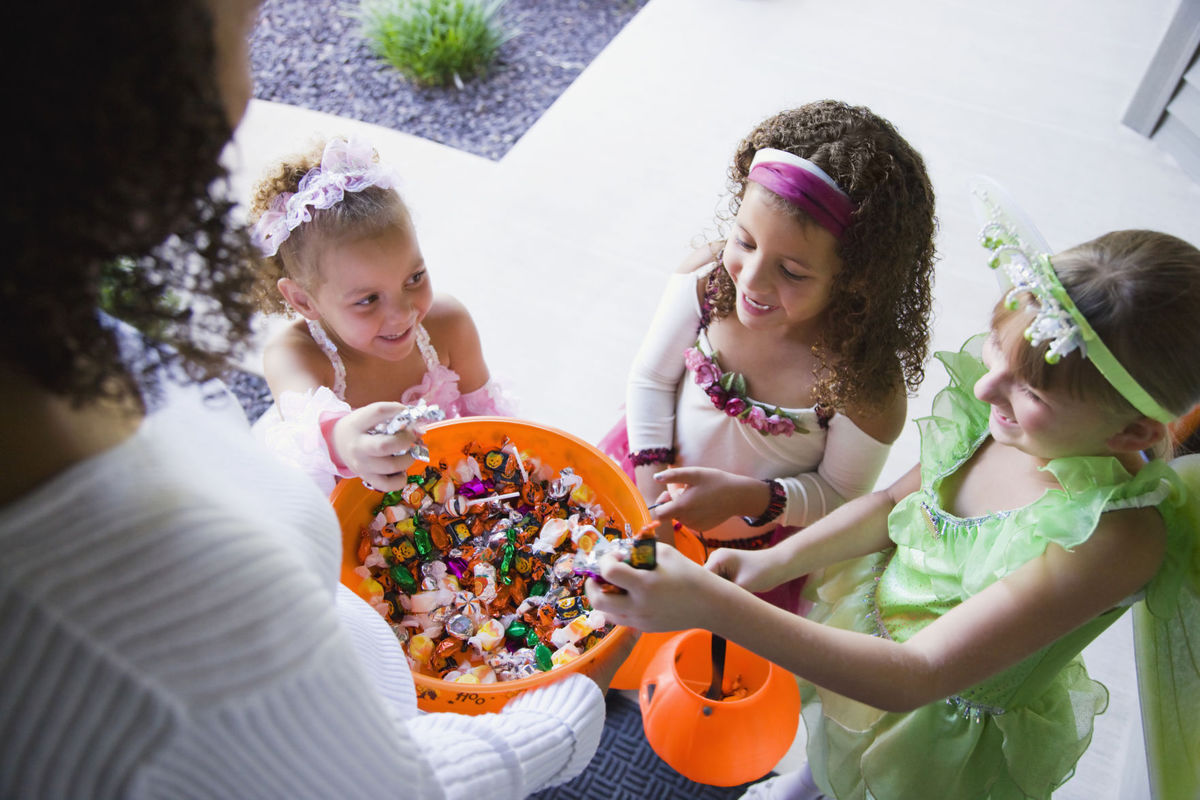
By now your kids have overdone it on the candy, somebody’s costume ripped, the meltdowns and sugar crashes have begun, and your jack-o-lanterns are starting to look dreary – another Halloween is in the books and you are left with orange, black and purple everything to clean up.
A holiday that once filled family with the simple joys of dressing up and trick-or-treating has turned into a multibillion-dollar industry. And the shift towards gore and depictions of violence are undeniable.
How does this fascination with Halloween affect our children?
For most families, Halloween was a simple holiday of dressing up, trick-or-treating, and carving pumpkins.
But nowadays it is becoming increasingly expected to decorate your house for Halloween and the more ghosts, skeletons, and gore, the better.
We then take even our tiniest children out to trick or treat at these houses. The decorations alone can be very frightening for a young child. But many times, the adult handing out the candies is wearing a scary mask or purposefully trying to scare those who knock on their door.
But it’s all in fun right?
No. In fact, the simple act of trick-or-treating and exposing our children to the death inspired costumes and décor could be sending a very different message to our children.
Live Science reported,
” ‘Intriguingly, Halloween is a holiday when adults assist children in behaviors taboo and out of bounds,’ Clark writes in the anthropological journal Ethos. ‘It is striking that on Halloween, death-related themes are intended as entertainment for the very children whom adults routinely protect.’
For most kids, at an age when they’re often not included in family funerals or witness to grave illnesses, Oct. 31 is often their first introduction to the subjects.”
Yikes! This perspective is something most people probably wouldn’t think about, but boy it is compelling!
Dr. Cindy Dell Clark, a psychologist at Penn State, recently conducted a study in Philadelphia of how Halloween affected a group of six and seven-year-olds. The results showed unquestionably that children are more terrified than most parents think.
LiveScience continued:
“Kids as young as six and seven, however, don’t differentiate between real death and the store-bought skeleton figures hanging in the trees and fake tombstones on the grass.
‘Children see things on a real plane, as opposed to adults, who are trying to get around real themes like death by treating them as fun.’
This particularly struck me as my seven-year-old son is going through a phase where he is asking me if something on the tv or computer is real or not. He is beginning to understand that somethings, like his favorite cartoon character is pretend, but other things are real.
It started during the recent hurricanes just a short time ago. Someone at school had been talking about it and he asked me if we could watch “the news” aka the Weather Channel. Skeptically I agreed, worrying about what images he might see or words he would hear.
His mind has been forever changed. He now asks if something is real when he sees real people on tv. I can tell that when my answer is yes, he is relieved. But when the answer is no – when it is a sitcom – he is unsettled and confused.
How much more confusing must it be for a child to see pretend versions of very real and serious things like graves and skeletons?
“[While] Conducting her study, Clark observed young children cowering from fear in front of the haunted displays and graveyard scenes common in so many American neighborhoods at Halloween.
Children interpret the frights of Halloween differently depending on their personal situations, such as the recent death of a relative or pet. An especially harrowing Halloween experience might have long-lasting effects. She recalled an interview with a grown woman who described trick-or-treating at age eight: A well-intentioned neighbor invited the girl inside, only to scare her and a friend with a real coffin displayed in the living room.
‘She hasn’t enjoyed Halloween since,’ Clark said.”
These are issues that parents need to seriously consider when introducing their children to Halloween.
Children understand more than adults give them credit for. While you may need to shelter your two-year-old from the neighbor scaring trick-or-treaters, you can have a constructive conversation with your preschool and school-aged children.
Keep it simple and age-appropriate. Explain to them that while Halloween is meant to be fun, there are parts that can be scary and if something scares them they should tell you, so you can talk about it or avoid it altogether.
You probably don’t need to get into a conversation about the frailty of life, but you can plant the seeds with your older children for later conversations.
A parent’s job is to secure their child’s safety and to make sure their child knows they will always be protected.
That message doesn’t change just because it’s Halloween.
If your child has recently encountered loss or another situation that could be amplified by scary Halloween events, try finding an alternative.
Most of all keep the lines of communication open with your child.
We live in a confusing world. And while we as adults try our best to understand the world around us, we must remember our children are too and with less knowledge and experience than we have.
It is a sign of the times when people are more excited and go all out for Halloween, but not Christmas. And of course, Thanksgiving has been marginalized as well.
We must remain vigilant to instill values of gratitude and charity in our children because our society is headed in the opposite direction.
What did you do with your children this Halloween? Will you be doing things differently next year? Tell us your thoughts in the comments section below.
